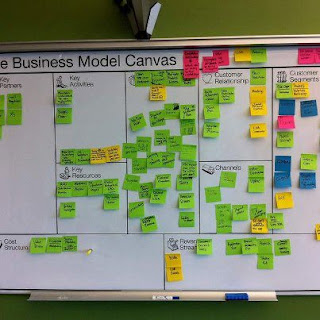You only benefit from a fraction of your employees’ potential value.
Your greatest, most expensive and ironically, most
under-utilized resource are your employees. This is why Transformance is
passionate about realizing the value of human capital in organizations.
Employee costs may be as high as 60% of your expenditure as a business; doesn’t
it make sense to obtain value from that investment? Unfortunately, many
businesses only receive a small fraction of benefit. In many companies, only a
handful of key leaders, managers and influencers are given a voice. The rest of
their workforce has a limited opportunity to make a difference.
 |
| Transformancein |
Employee underutilization usually increases the closer you are
to the frontlines of a company. Frontline employees are often perceived to be
less important than middle managers. However, they usually have the most value
to offer. Their close proximity to the day- to-day action of your business
gives them an ideal position to identify your company’s strengths, weaknesses,
opportunities and threats.
The classic example
of an underutilized employee is the cleaner. They may be considered the “lowest
man on the totem pole,” however they often have the best opportunity to
identify waste and inefficiency. They walk the line, cleaning, sweeping and
observing. They witness delays when a part is not connected properly upstream.
They see the fatigue and frustration on workers’ faces as the day progresses.
They remove hundreds of pounds of unnecessary waste and damaged product that
could have been saved or reworked. I once went into a Mercedes showroom which
was immaculate and ended up having to use the washroom – it was literally
filthy and completely at odds with the Mercedes brand and philosophy. Just
because it was out of sight, it doesn’t mean that it should be out of mind. An
engaged cleaner would have resolved this.
So imagine the improvement in overall quality,
job-satisfaction and cost-saving if you knew what “your cleaner” knows. Now,
multiply the value of all the unreported, ideas, knowledge and insights of
every employee in your company. The untapped value is enormous.
 |
| Transformanceinc |
When you don’t involve and leverage employees contribution
the following happens:
·
Employees often do not feel connected to their
company’s strategies.
·
Employees do not know what is expected of them.
·
Employees do not know how their performance will
be evaluated.
·
Employees feel isolated from the decision making
process.
·
Employees feel supervisors can arbitrarily
prevent or slow their promotion.
Your objective should be to replace an “us versus them”
culture with a culture that creates generations of leaders. When possible, you
should adopt a policy of hiring new employees at the bottom and promoting
existing employees to the top. You should replace subjective annual reviews
with ongoing mentorship that assesses an employee’s performance in a completely
fair, open and democratic way.
At Transformance we love the concepts of coaching and
mentoring, and all successful companies have these two great pillars in place.



